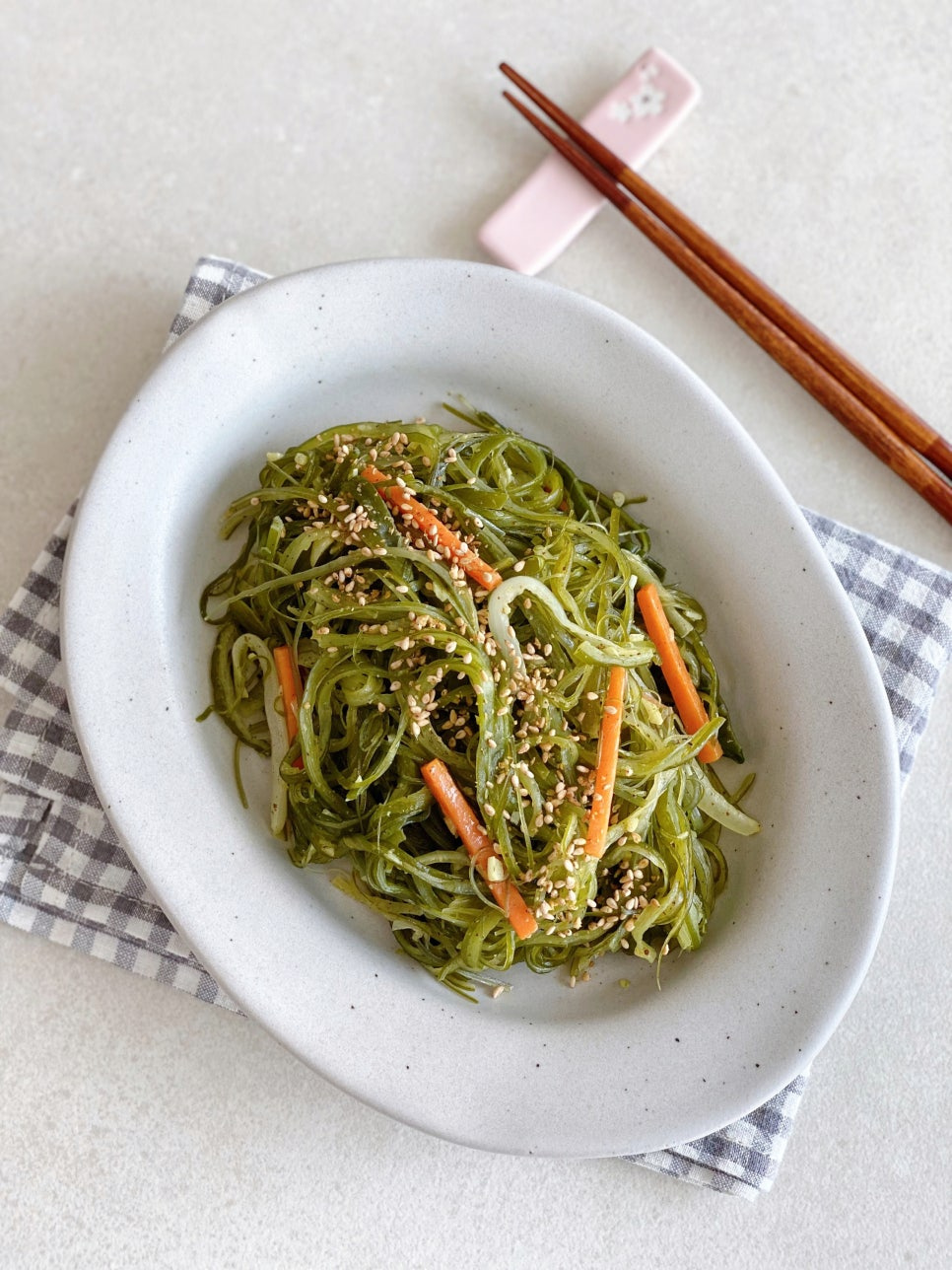Chewy and Delicious Stir-fried Sea Mustard Stems (Miyok Julgi Bokkeum) Recipe
How to Make Stir-fried Sea Mustard Stems Without a Fishy Smell: Cooking Tips Revealed!

A beloved banchan (side dish) that’s a staple on Korean tables, stir-fried sea mustard stems are a must-try! With affordable ingredients and simple preparation, they offer a nutritious boost and a delightful chewy texture. However, salted sea mustard stems can sometimes have a subtle fishy odor if not cooked properly. Don’t worry! This recipe, along with simple yet effective cooking tips, will guide you to create a delicious banchan bursting with savory flavor, completely free of any unpleasant smell. Enjoy this nutritious side dish!
Main Ingredients- Salted Sea Mustard Stems 150-200g
- 1/3 Onion
- Carrot (slightly less than the onion)
Cooking Instructions
Step 1
First, it’s crucial to remove the excess salt from the salted sea mustard stems. Soak them in cold water for about 10 minutes. You can also change the water once during this time for better results. Be careful not to soak them for too long, as this can affect their taste and texture. The soaking time may vary depending on the product, so it’s best to refer to the package instructions for optimal flavor.

Step 2
Thinly slice the onion and julienne the carrot to a similar thickness. The crispness of these vegetables will add a wonderful contrast.

Step 3
After draining, use kitchen scissors to cut the sea mustard stems into bite-sized pieces. Scissors are much easier and neater than using a knife for this.

Step 4
The first tip for eliminating any fishy smell is to blanch them briefly in hot water. Just like enjoying shabu-shabu, dip the sea mustard stems in boiling water for a quick swirl (1-2 times), then immediately drain them. This step alone significantly reduces the fishy odor, resulting in a much cleaner taste.

Step 5
Our second tip involves using perilla oil. While sesame oil is also delicious, perilla oil is excellent for neutralizing any remaining fishy notes and adds a wonderful nutty aroma. Heat 3-4 tablespoons of perilla oil in a pan over medium heat. Add 1 tablespoon of minced garlic and sauté until fragrant.

Step 6
Once the garlic is lightly cooked, add 1 tablespoon of Korean soy sauce (guk-ganjang). Stir it into the oil to infuse the flavors, which will help season the ingredients from the start.

Step 7
When the minced garlic is golden brown, add the drained sea mustard stems to the pan and stir-fry them. Ensure they are coated well with the perilla oil and garlic mixture.

Step 8
After stir-frying the sea mustard stems briefly in the oil, add the julienned carrots and onions. Continue to stir-fry until all the vegetables are tender-crisp. Now, add 1 tablespoon of mirin and adjust the seasoning with Korean soy sauce or fish sauce. A touch of fish sauce really enhances the savory (umami) flavor, making it incredibly delicious. Remember to taste the stems after soaking, as they might still retain some saltiness, and add fish sauce or soy sauce accordingly.

Step 9
The third tip is to incorporate perilla powder. Along with the perilla oil, the nutty and slightly pungent flavor of perilla powder adds a wonderful depth and a clean savory taste. Stir-fry over medium heat until the sea mustard stems are tender, but not mushy. If you prefer a softer, more stewed texture, you can add a small amount of broth (like anchovy or kelp broth) and simmer briefly, similar to how zucchini stir-fries are sometimes prepared. However, for that satisfying chewy texture, I prefer to simply stir-fry until sufficiently cooked.

Step 10
Finally, sprinkle some sesame seeds on top, and your delicious, chewy stir-fried sea mustard stems banchan is ready to be served!



